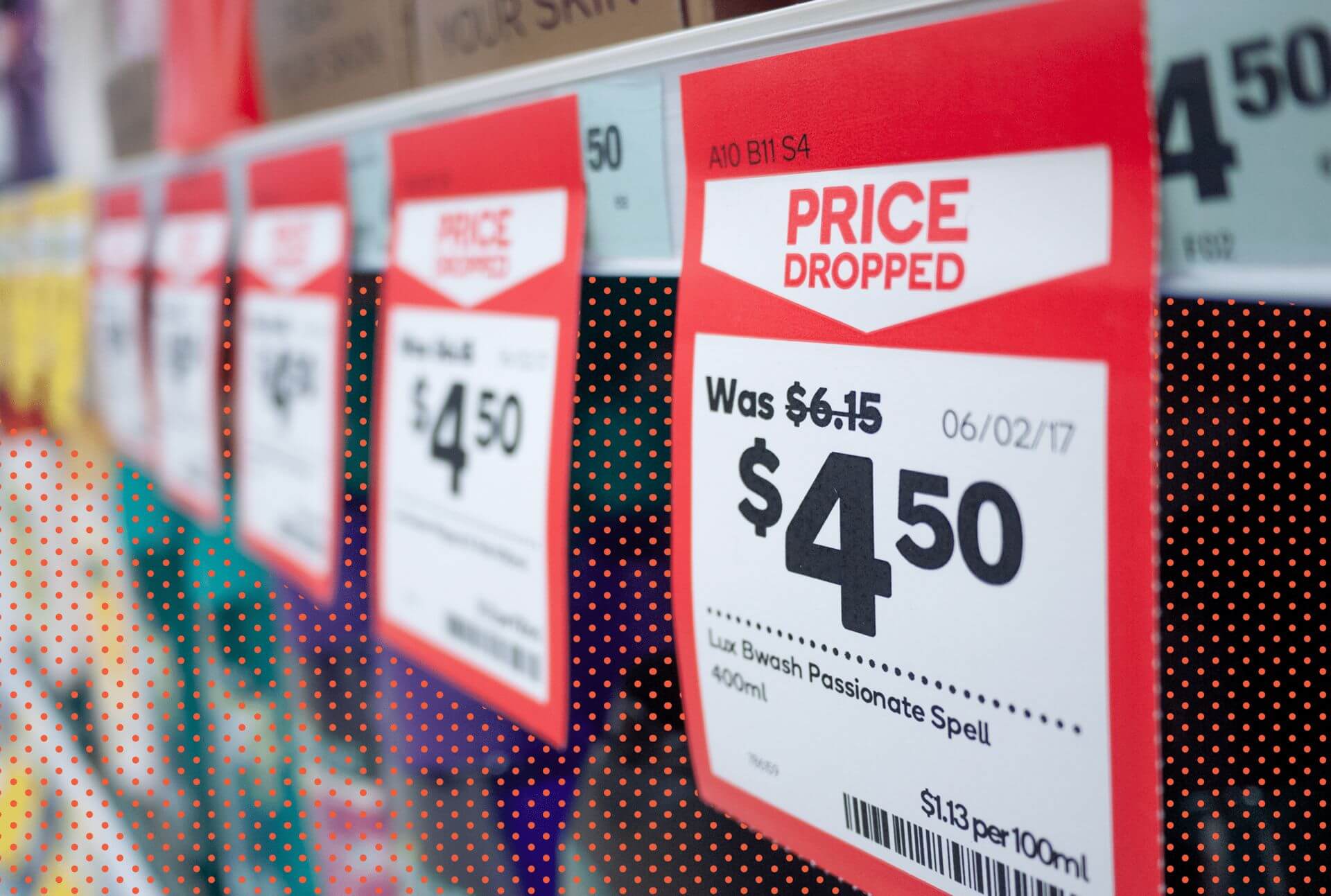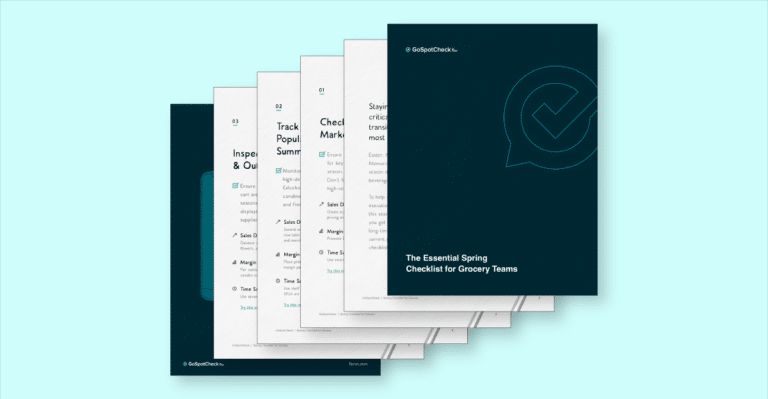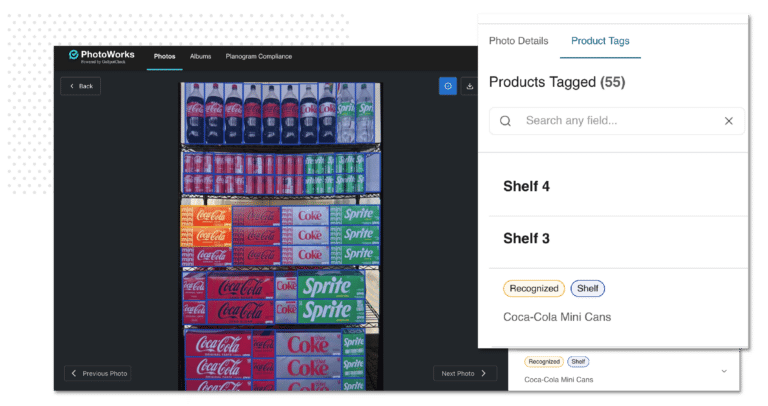What is Retail Pricing?
If you’re like the 43% of American shoppers, you are loyal to at least one food or beverage brand. But have you ever been at the store and bought another brand of the same item because it was on sale or part of a BOGO deal for members? If you have, you’re not alone. In a recent survey, more than 65% of shoppers have purchased a brand different from the one they normally do because of a lower price.
While many of today’s pricing concerns stem from ingredient shortages and increased fuel costs, pricing has long been a complex and valuable aspect of retail management—but especially today, when brick-and-mortar stores are constantly having to compete with the rock-bottom prices of online retailers. Store-wide pricing strategies are often focused on two goals: following market compliance and increasing profitability. Many types of pricing models and strategies exist, with the overarching objective of maximizing sales without compromising profit.
We’re taking a look at some of the most common pricing models found in retail environments and how they work to increase margins, profitability, and loyalty.
Understanding the Basics of Retail Pricing Compliance and Strategy
For retailers, setting the right price for products is a delicate balance between many factors. They must take into consideration internal elements, like the cost of goods, operational and overhead expenses, and external factors, like market prices, competition, and the state of the economy as a whole—all while focusing on the bottom line. To achieve this, retailers use a combination of pricing strategies and techniques to price items and ensure the optimum balance between costs and sales.
Store-Wide Pricing Models
Single-Tier Pricing
At stores that embrace a single-tier pricing model, all customers get the same price on all items. There are no membership cards or loyalty programs—if an item is on sale, every shopper gets the sale price.
Publix has long been known for its single-tier pricing technique, resisting a traditional loyalty card program and proclaiming that shoppers shouldn’t need a card to save money there. Walmart is another example of a nationwide retailer that has abstained from a loyalty program because they offer “everyday low prices.”
Two-Tier Pricing
Many grocery stores utilize this pricing model throughout the country. Shoppers register for a free membership card and get lower prices on rotating items. While stores don’t make any revenue directly from a free membership program, they are gathering valuable data on shopping behaviors, allowing them to target marketing and increase customer retention. Plus, stores that offer a two-tiered pricing system often see higher sales and larger basket sizes from members, with one retailer even seeing an average of $14.95 more in sales in members than nonmembers.
Membership Pricing
Warehouse stores, like Costco, Sam’s Club, and BJ’s, use a different pricing model than other retailers. Standard retailers make money by charging items at a markup from the wholesale price they paid their supplier, while warehouse stores charge a much lower markup. According to Forbes, Costco prices its items at a markup of only 15%, while a traditional grocer may markup as much as 50%. Wholesale stores charge a fixed yearly fee to customers to make up for these lost profits.
Blended Pricing
When Amazon acquired Whole Foods in 2017, the premium grocery store began a series of price cuts, shifting from nearly 40% more expensive than grocery stores like Kroger to only 27%. They also introduced a unique pricing system that blends two-tier pricing with membership pricing. All Whole Foods customers get sale prices, but there’s another tier of pricing and other perks exclusively for Amazon Prime Members (which requires an annual membership fee).
Channel Pricing
Even though shoppers are eager to get back into stores, the convenience of online grocery pick-up or delivery has proven too significant, with 55% of shoppers planning to use one of the two methods post-COVID. Many retailers have implemented a channel pricing system, charging different prices for in-store and eCommerce. In these cases, the online price is usually higher to cover the costs of compiling products for orders, curbside pickup operations, and delivery.
Category Pricing Strategies
In addition to store-wide pricing models, retailers can also implement various pricing strategies and tactics from a product or category level.
Competitive Pricing
Competition-based pricing is a technique that involves setting your prices in relation to your competitors. This strategy is also where price-match or price-guarantee falls—if a lower price is available elsewhere, a retailer will match or beat that price. For retailers that utilize a competitive pricing structure, having accurate data on competitors is extremely valuable. Modern technology has made this process much easier than before, with mobile apps like GoSpotCheck by FORM, helping retailers and CPG brands collect real-time insights on competitor pricing, programming, and operations during comp shops.
Everyday Low Pricing
This approach aims to keep prices permanently low on high-demand items so that customers have can expect a consistent experience on common items every time they shop. For these items, retailers don’t require shoppers to have a loyalty card, wait for sales, or use a coupon. This type of strategy works well for products whose costs to retailers will remain unchanged for a long period of time.
Loss Leaders
Loss leader pricing is a strategy where a product is sold at a price lower than its market value with the larger goal of stimulating the purchase of more profitable items. In today’s retail environment, milk and eggs are considered loss leaders. Stores may not be making a profit off of these items, but they expect shoppers to purchase other items on the same trip (this is also why milk and eggs are typically located in the back of the store). Once shoppers have milk, eggs, and other low-value necessities in their carts, they’ll very likely notice higher-margin items while in-store, like a gourmet collection of cookies or a pack of beer. This is where retailers can upsell shoppers and drive transaction counts on a basic shopping run: Remember the last time you didn’t think you needed a cart while shopping in Target? We’ve all been there.
Bundle Offers
Price bundling is a strategy used in nearly every type of selling—travel, B2B SaaS, hospitality, and retail. In grocery stores, price bundling is a way to offer customers discounts while simultaneously increasing item count. Bundle offers could be buy one get one free of the same item, or it could be a custom bundle to incentivize the purchase of a specific product—for example, a shopper buys chips and gets a certain brand of salsa for free. Offering a bundle deal is also an effective way to launch a new product: by incentivizing customers with a discount or a BOGO deal, retailers can lower the lift of buying the new item, and ultimately increase the likelihood of that item becoming a regular purchase.
Pricing Strategies for Displays
Once retailers have established basic pricing tactics they want to implement, they need to bring them to the shelf. This is done through basic planogram structure—what shoppers see on the shelves—or through visual promotional displays—end caps, point-of-sale, or others.
Planogram Compliance and Strategy
Retailers use planograms to organize items, maximize space, enhance visual appeal, and encourage sales. Planogram compliance is critical for retail execution—not only for following merchandising planning and trade commitments but for getting the results you want and ensuring consumers have the best in-store shopping experience. Planograms sort items by brand, size, packaging, price, and more. When it comes to pricing, grocers need to be strategic about product placement. While the best places are the shelf are “eye-level” and “grab-level,” not all items can be placed here.
A report by Neilsen recommends the following strategy:
TOP AREA:
Use the top shelf to push niche, expensive, or local products. For example, a unique chili paste or a local hot sauce.
MIDDLE AREA:
Because this area is at eye level, it should be used strategically for high-profit items.
LOWER AREA:
Since the bottom shelves are not in direct line of vision from shoppers, Nielsen recommends using this area for high-rotating and popular products that consumers will be looking for regardless.
Promotional Displays
Retailers also have to consider promotional displays as part of their overall pricing strategy. While large endcaps or seasonal displays often get customers to increase their basket size (it’s reported that over 87% of US shoppers make impulse buys), the low prices they offer can negatively impact profit margin and performance.
To counter this, grocers utilize a blended margin strategy. This method places low-profit margin or sales items next to higher-profit items in the same promotional display. Assuming shoppers will buy both products, the grocers profit margin will blend and enhance the overall profitability.
Pricing Compliance & Execution
With pricing strategies in place on the shelf, in promotional displays, and throughout the entire store, retailers now need to ensure that their pricing policies are accurate and profitable. Pricing audits typically analyze cost to serve, sales processes, promotions, customer value, and market positioning.
Without regular price auditing, retailers and grocers run the risk of having incorrect prices listed for items or on promotional materials. This can negatively impact their strategy and reputation, causing them to face liabilities like:
- Lost sales and margin: If a product has been incorrectly priced, a cashier may give it away or the customer may decide not to buy it, resulting in lost sales.
- Lost time: If the customer says the price is wrong at the register, the cashier might have to do a price check to confirm, holding up the line and creating more unhappy customers.
- Lost trust: If a customer has to deal with a frustrating situation caused by an incorrect price, they may lose trust in the store and shop elsewhere.
Pricing audits do more than simply make sure items on the shelf are priced correctly. They can also take into account promotional plans, ensure planogram compliance, and audit competitor pricing strategies. Certain tools can help retailers better understand these insights and improve pricing execution in-store.
GoSpotCheck by FORM for Retailers
To ensure stores have a pricing strategy that follows regulations and maximizes marginal performance, mobile tools like GoSpotCheck by FORM can help. Our retail execution app can support grocers and other retailers not only in their pricing policies and planogram compliance, but in their daily operations, merchandising, visual promotional displays, and task management. See it all in action here.
Follow FORM on LinkedIn for industry insights, retail strategies, and company news.




